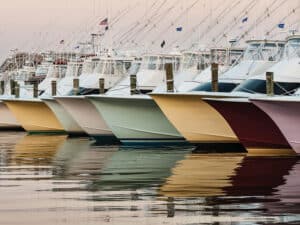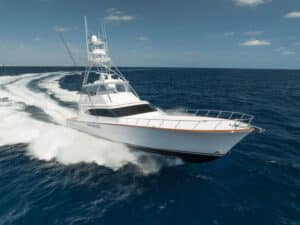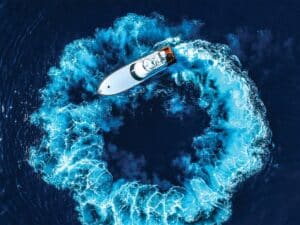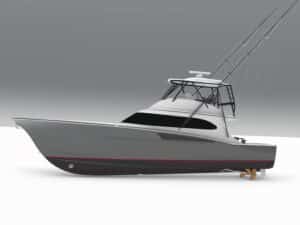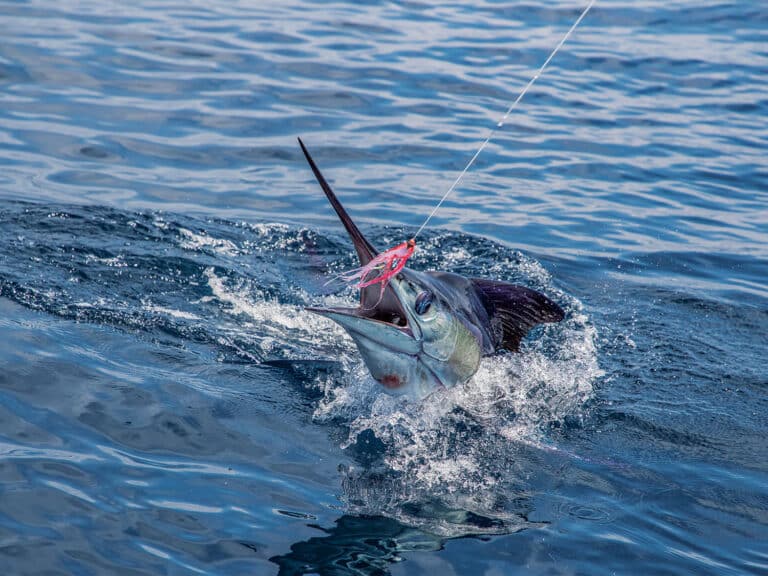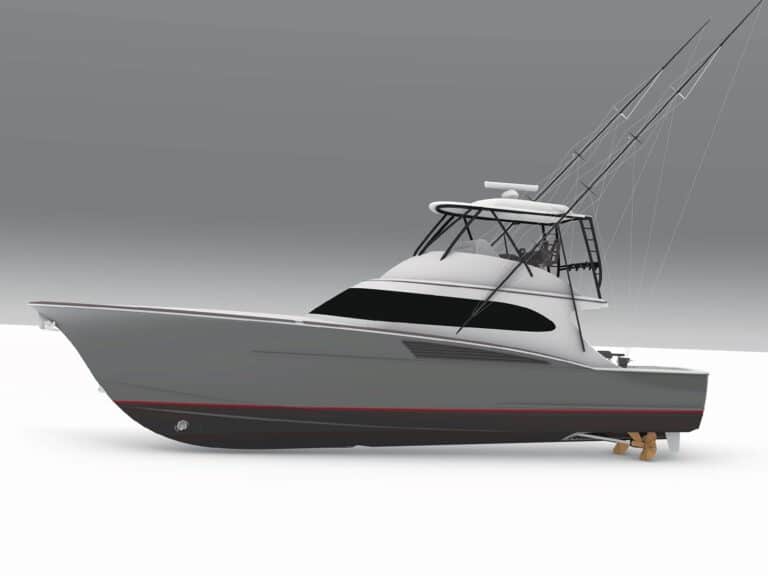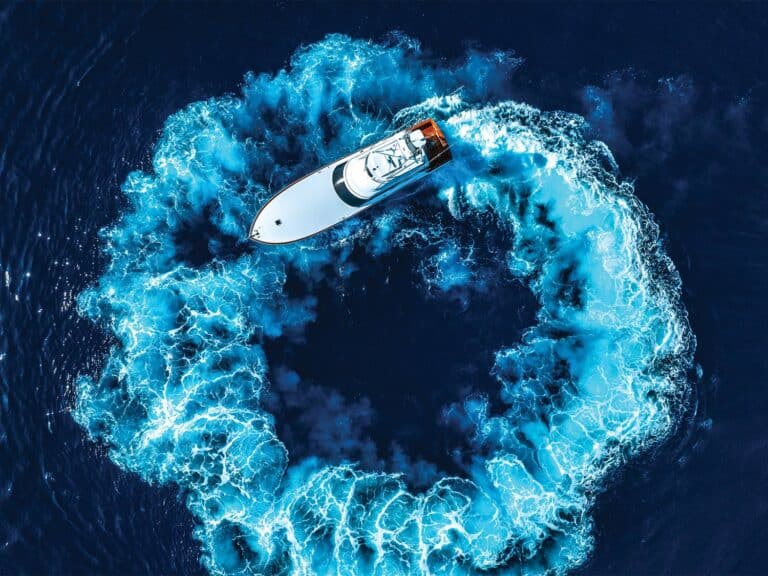While the thrill of battling billfish with rod and reel continues to seduce anglers around the world, the challenge of capturing them with a camera can be just as captivating. In an instant, a photographer must track the fish’s movement, take note of the light, envision the frame, and ensure that the camera settings are suited for both the environment and the situation, all while staying safely out of the way. It’s high-intensity work, but with the right measure of skill and luck, photographers can successfully suspend a breathtaking moment in time.
Images of fired-up fish, hand-built boats and dreamy destinations appear in every issue of Marlin, and in recent years, six photographers have emerged. Both sportsmen and artists, their areas of expertise might vary, but they all have found their way to these pages. This is when an isolated battle with an angry blue marlin, electrified in neon, becomes a story.

Tech Specs
Austin Coit: Master of Drama and Light
St. Petersburg, Florida’s Austin Coit is no stranger to the effects of light and shadow; it’s a vivid, dramatic look into the art of sport fishing. His skills stemmed from an appreciation for the cutting-edge content coming from the surfing industry. He further explored photography during a trip to Alaska, honing his skills in a college documentary production class. Since he was already involved in the fishing community, he merged the two passions for a full-time career in marine photography.
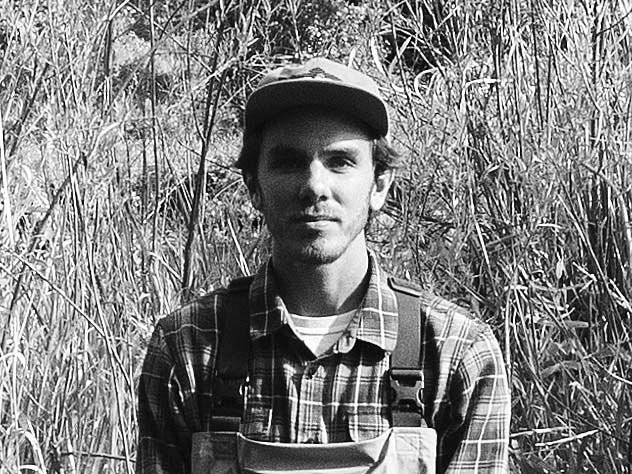
Coit captures images of sport-fishers crashing through stormy seas, marlin twisting aggressively in attempts to throw the hook, and the delicate intricacies of fish patterns and scales. “I like creating narratives implicitly with photography rather than explicitly, so I try to do that as much as possible,” he says.
Coit’s first published shot—an image of feeding ballyhoo—was featured in Marlin. Recalling the moment, he said, “I’m pretty sure I screamed; I think I called like 15 people to tell them.” Although his striking photos are multifaceted, he enjoys taking portraits most of all.
The Gear
His beautiful imagery is captured with a Canon 1DX Mark II when shooting on the water, and Sony camera bodies for everything else, while relying on a gamut of lenses with varying focal lengths. “It’s important to always be ready,” Coit says.
Favorite Shot
“One that still sticks out is the all-black shot of an F&S yacht going up-sea in South Florida,” says Coit of an image that appeared on the cover of the April/May 2017 issue of Marlin.
“It was a matter of lots of unpredictable factors coming together at once,” he continues. “The sky offshore was super dark from a storm, and there was just enough sun hitting the side of the boat that I was able to smash the shadows and make it look like the whole thing was black. That was one of those insane moments where, if I hadn’t been ready for it, I would have blinked and missed it.”
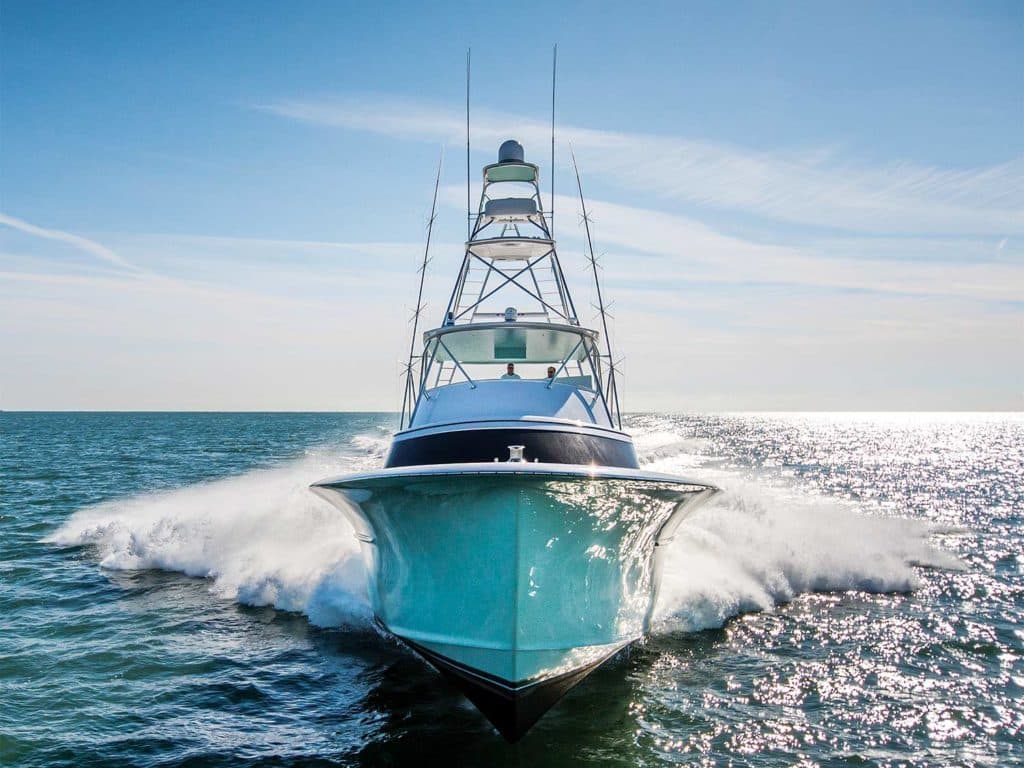
Tech Specs
Tom Spencer IV: Master of the Running Shot
Initially specializing in black-and-white film photography, Tom Spencer IV of Morehead City, North Carolina, now focuses on sport-fishing and hunting subjects. His unique photos of running boats accentuate what makes each build different: flare, crown and shear. The owner of Fish Hunt Photo really knows how to make our hearts race.
Spencer’s father gave him his old Canon AE-1 camera when he was 12 years old, but he did not fully understand that film camera until he took classes at Hampden-Sydney College in Virginia. Fresh out of college, he worked for Southern Piping Company, which hired him to photograph job sites. Using different angles and perspectives, he found ways to make seemingly uninteresting subjects extraordinary. His photos brought the inanimate to life. Spencer’s ability to find new and unusual perspective is clearly reflected in his photographs of boats.
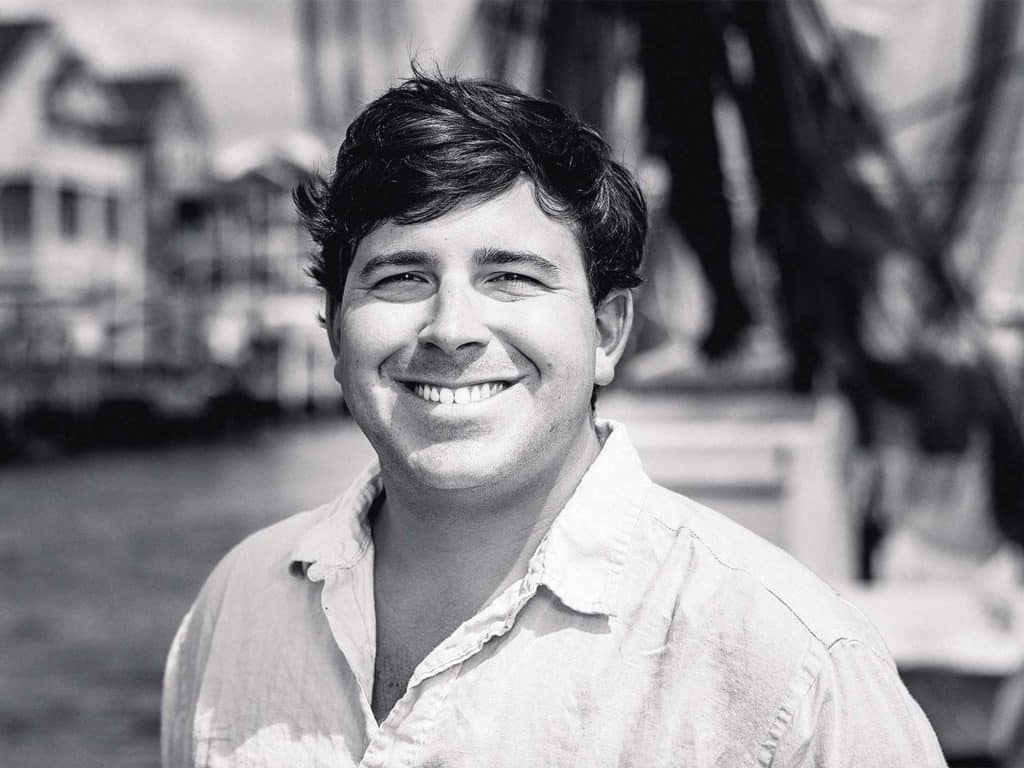
While tournament fishing aboard Fin Planner, Spencer snapped a shot of the Pirate’s Cove fleet returning to the marina. The image showcases a gorgeous lineup of pastel-colored custom boats, and was later published in Marlin. “It’s a really great feeling knowing that someone was admiring the photos.” To capture images like this one, he says it’s important to have fun and stay curious; the technical stuff shouldn’t outweigh the creativity.
Favorite Shot
This shot was taken on a photo shoot with helicopter pilot Timmy Brothers. Capt. Chris Bullock of Eye Roller was running at them at 45 knots when Spencer had to radio him to pull back a bit so the helicopter could keep up. “Helicopter pilots face their own challenges in photo shoots like these,” he says, “maintaining immense concentration and skill to make it happen safely while literally being chased down.” Fortunately everything lined up, and Spencer pulled off an image that is immediately recognizable.
Watch: How do photographers capture those incredible images? Here’s one way.
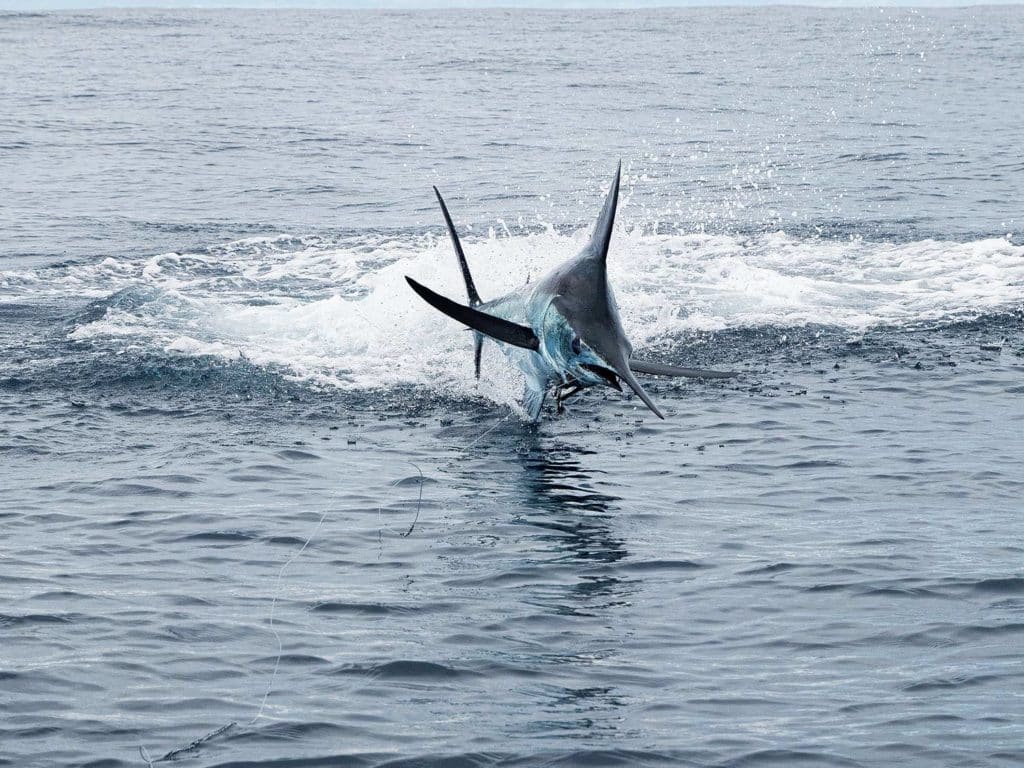
Bubba NaQuin: Master of the Angry Billfish
Thanks to his father, Bubba NaQuin established a fishing addiction at a young age in his hometown of Lake Charles, Louisiana. At 18, he worked as a deckhand on a 60-foot Hatteras, and he’s been chasing billfish ever since. Not really taking his hobby seriously until three years ago, NaQuin joined a friend who owns a charter-boat operation in Costa Rica, and it was then he realized he had a knack for it.
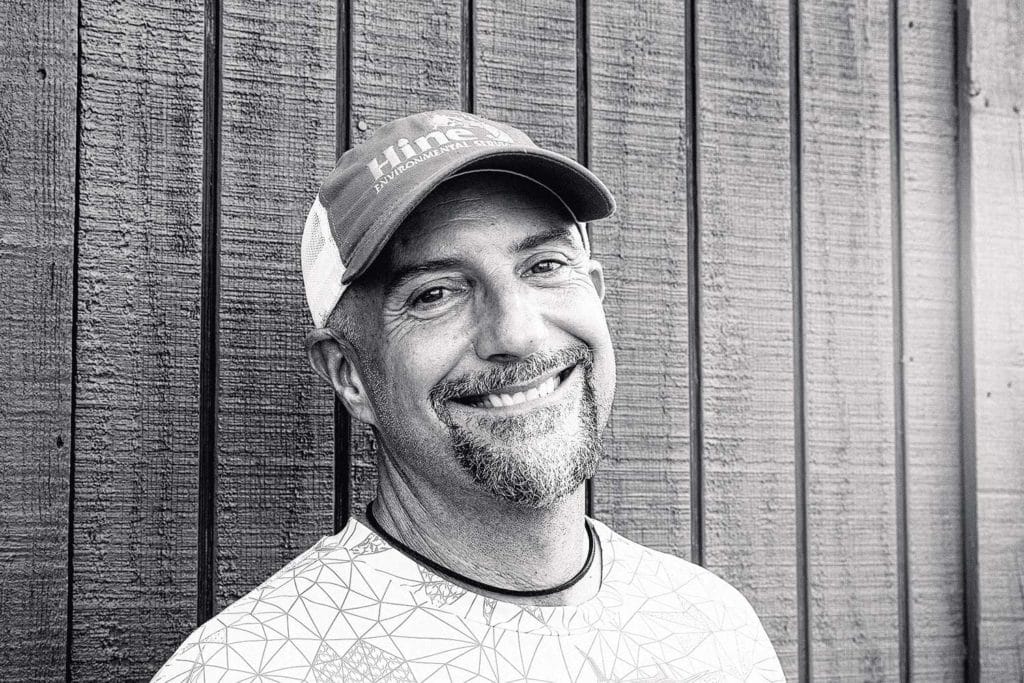
His first published photograph landed in the February 2019 edition of Marlin: an extraordinary shot of a blue marlin alongside Sea Fly in Costa Rica. “There are some incredibly talented photographers out there, and to see my pic in Marlin was extremely humbling,” he recalls.
This talented photographer continues to learn what he can from others. “That’s how everyone gets better,” NaQuin says, “by listening, gathering knowledge, and sharing tips.” He also says there is no such thing as taking too many pictures, even in high-stakes situations.
The Gear
Even though he might be satisfied with only a handful, the few photographs that do make the cut make the effort worthwhile. To capture intense shots of fish blasting through the horizon, NaQuin relies on his Canon 80D and two lenses: the EF 24-70mm f/2.8 II and EF 400mm f/5.6, with an occasional EF 1.4x III extender.
Favorite Shot
On a trip to the Costa Rican seamounts, NaQuin set out to capture a frame-worthy jumping blue marlin sequence. The third and final shot of the sequence depicts a livid blue marlin jumping at the boat, heading right for the camera. “Pictures freeze time, and you can always look back at them and reminisce the story that goes with it, and that’s why I love it,” he says.
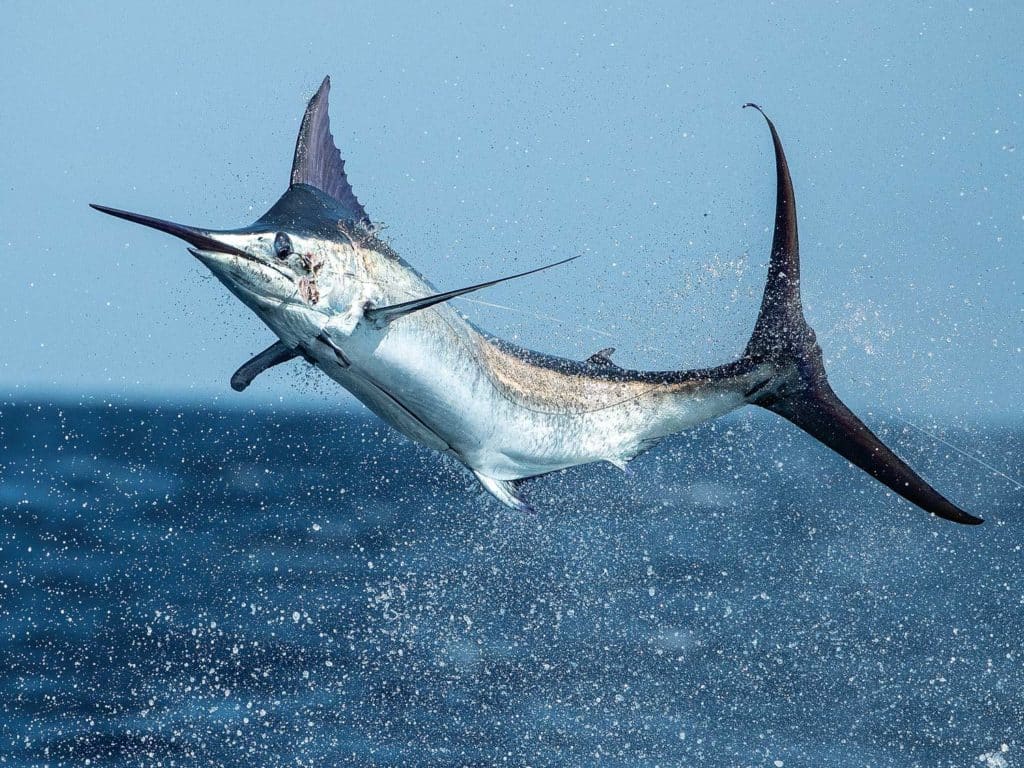
Hannes Ribbner: Master of the Cinematic
Sweden’s Hannes Ribbner first dabbled in fishing photography and videography in 2013 but didn’t establish a full-time career until a year ago, and his work is nothing short of breathtaking. Whether a photograph or a short film, his imagery is striking and cinematic. Travel is what he enjoys most about the job—exploring new places, meeting new people, and helping clients remember their lifetime achievements.
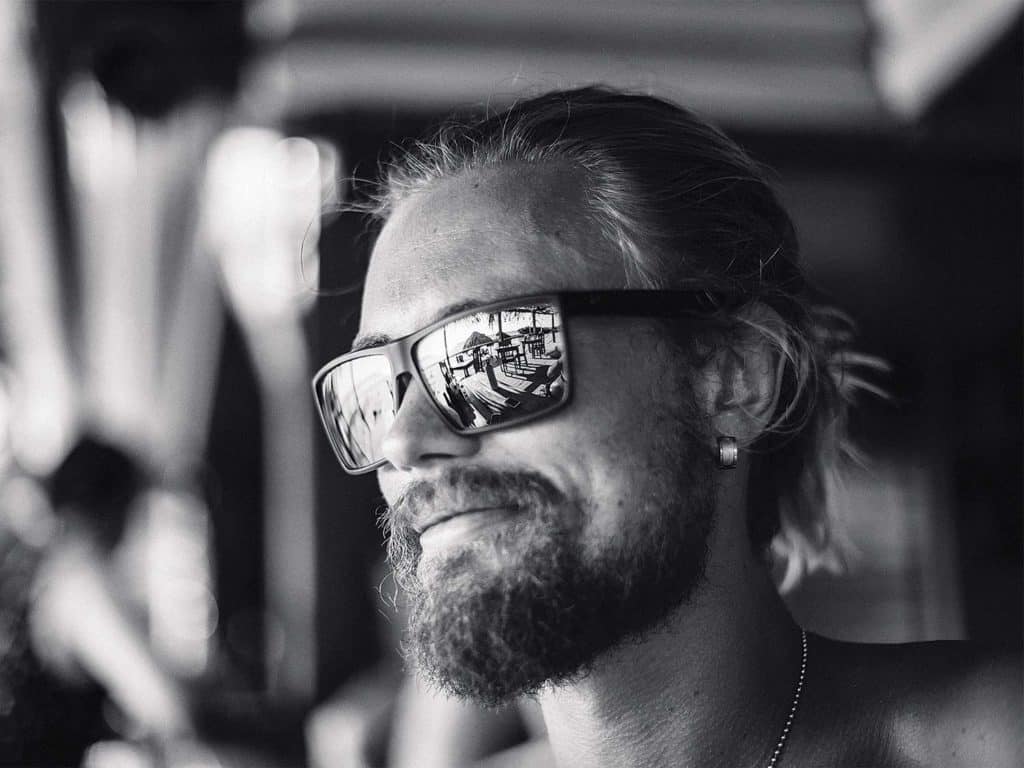
A German magazine was the first to publish Ribbner’s work, recognizing his talent with a cover shot. He wrote and provided imagery for an article introducing popper-fishing north of the Arctic Circle for the magazine, which was ultimately published in 11 different countries. Although this may have been the gateway to fishing publications, his unbelievable pictures of jumping fish have had prolific popularity across magazines and social media platforms alike.
The Gear
To capture images of leaping blue marlin and wahoo, Ribbner largely depends on his Canon 1Dx Mark II with a Canon 100-400mm Mark II lens. For closer shots, he prefers a Tamron 24-70mm G2 lens with a wide-open aperture. “A lot of shots will be out of focus with such a shallow depth of field,” he says, “but when you get it just right, it looks stunning.” Like his peers, he encourages practice and experience, expressing the importance of setting white balance, ISO, aperture and shutter speed ahead of time—and being prepared to change settings as the light changes. “Be observant, wear good sunglasses, and get to know the fish you’re shooting so you get a feel of where it’s going to be at a certain time,” he suggests.
Favorite Shot
This mind-blowing image of a blue marlin airborne at the golden hour was captured while on a trip to Cape Verde. The focus is crisp, the light is mesmerizing, and the fish is demonstrating acrobatics that immediately captivated Ribbner: “Its tail fin was a little bent, and I’ve never seen that in a photo before. I absolutely love it.”
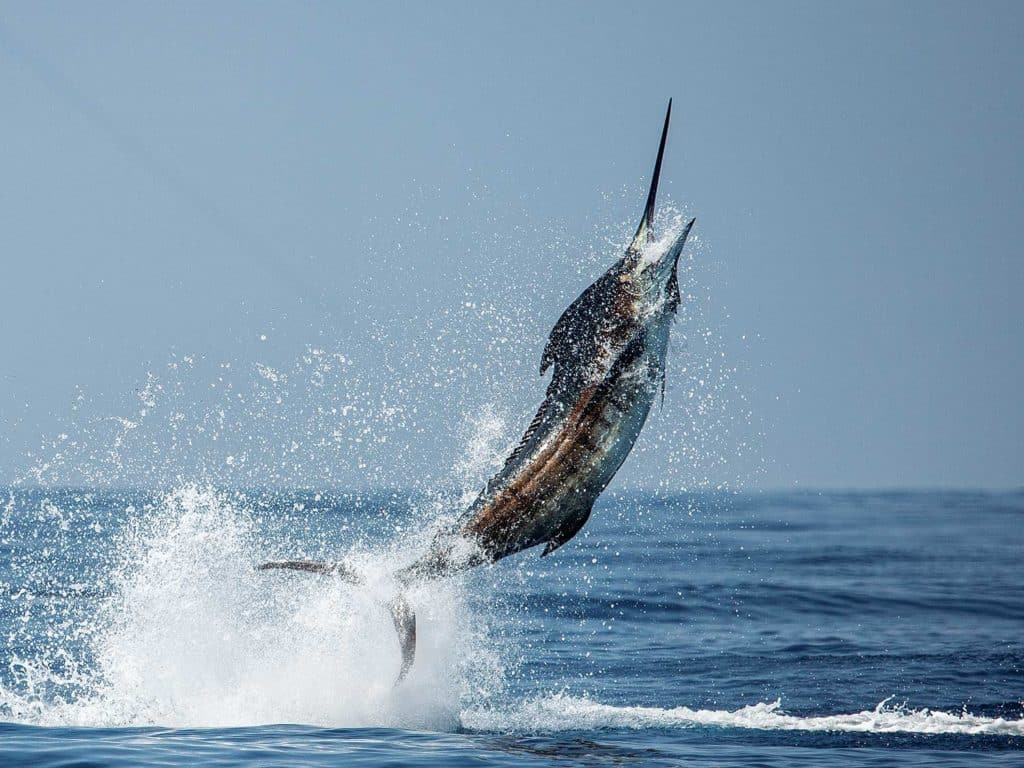
Capt. Joe Byrum: Master of the Skyward Blue Marlin
Summers spent along the coast in North Carolina, beautiful images in fishing magazines, and years watching the weigh-ins at the Big Rock Blue Marlin Tournament initially piqued Capt. Joe Byrum’s interest in photography. As fate would have it, the 2009 event gave Byrum his first big break when the tournament’s magazine published his photo of a blue marlin—head out of the water and lure flailing. “I remember getting $100 for it and being so stoked,” Byrum recalls. “One, because I got paid to take a photo of a marlin, and two, because I finally got a check from the Big Rock!”
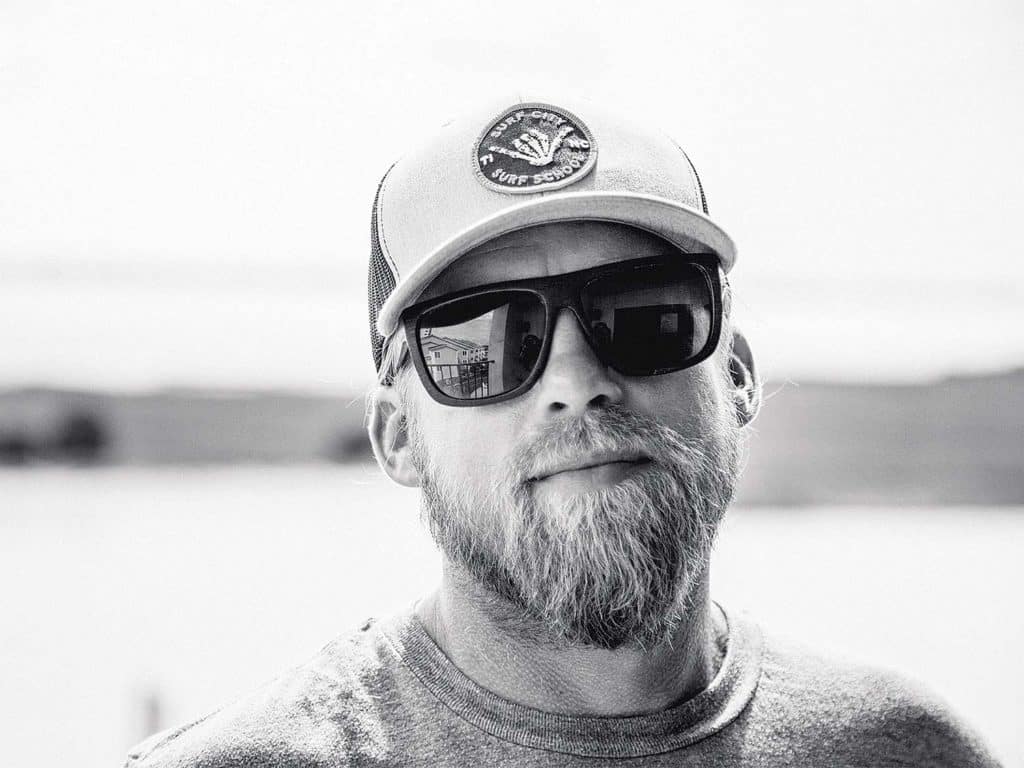
With a degree in journalism and media production from East Carolina University, Byrum spent the next six years in film, working on projects such as Iron Man 3 and The Conjuring. He is now based in Kona, Hawaii, working as photographer and mate aboard the 37-foot Merritt, Benchmark.
The Gear
Never offshore without his Canon 5D Mark III, he relies on two lenses: the Canon EF 100-400mm when shooting at distance, and the Canon EF 24-105mm lens when shooting boatside. Byrum shoots in shutter priority mode when capturing images of fish because this allows the camera to adjust settings around the shutter speed. Typically, he shoots at 1/1600 to 1/2000 of a second when he’s focused on jumping blues. And when playing with available light, he says, “I like to go for the lowest ISO and the narrowest aperture I can get away with.”
Favorite Shot
“This big fish smashed our short corner lure and put on one of the best aerial displays I’ve ever seen immediately following the bite,” Byrum recalls. “I had my camera ready and started firing away as soon as I saw it.” Maintaining the focus on the fish was challenging, but when he looked at the images, he was confident that the shot could be cover material.
Check out these images of baby billfish: tiny sails and miniature marlin.
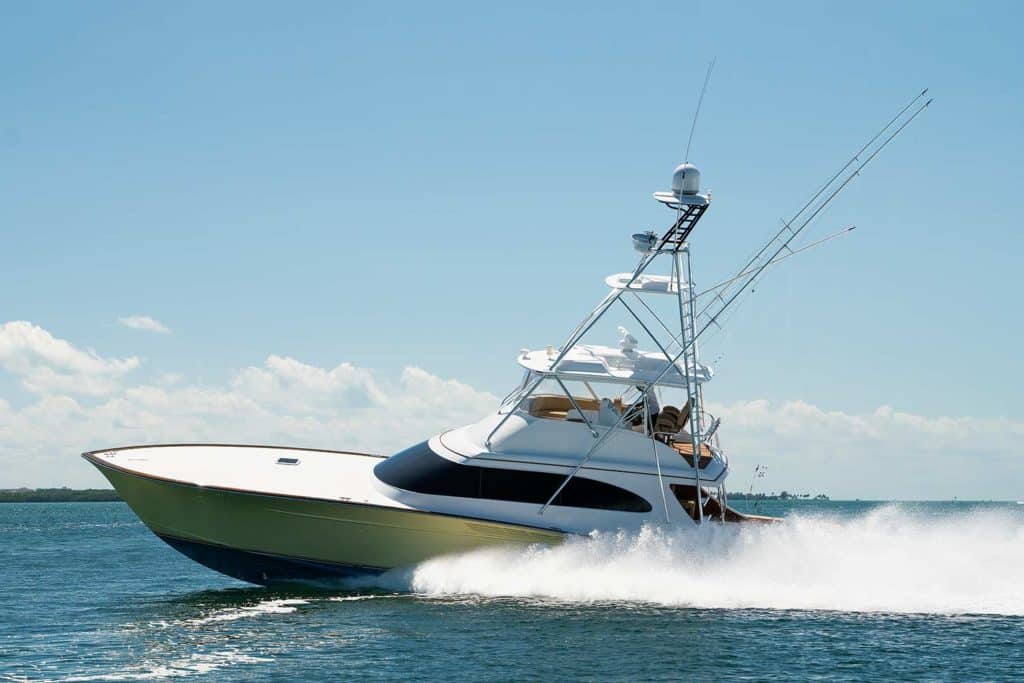
Chris Rabil: Master of the Screaming Sportboat
For Chris Rabil, time spent on the docks in Ocean City, Maryland, developed his interest in the sport-fishing industry. “I found myself snapping photos of my favorite boats for wall art and desktop backgrounds,” he recalls. That lifelong obsession is now a career for Rabil, who has been working as a professional photographer for the past three years.
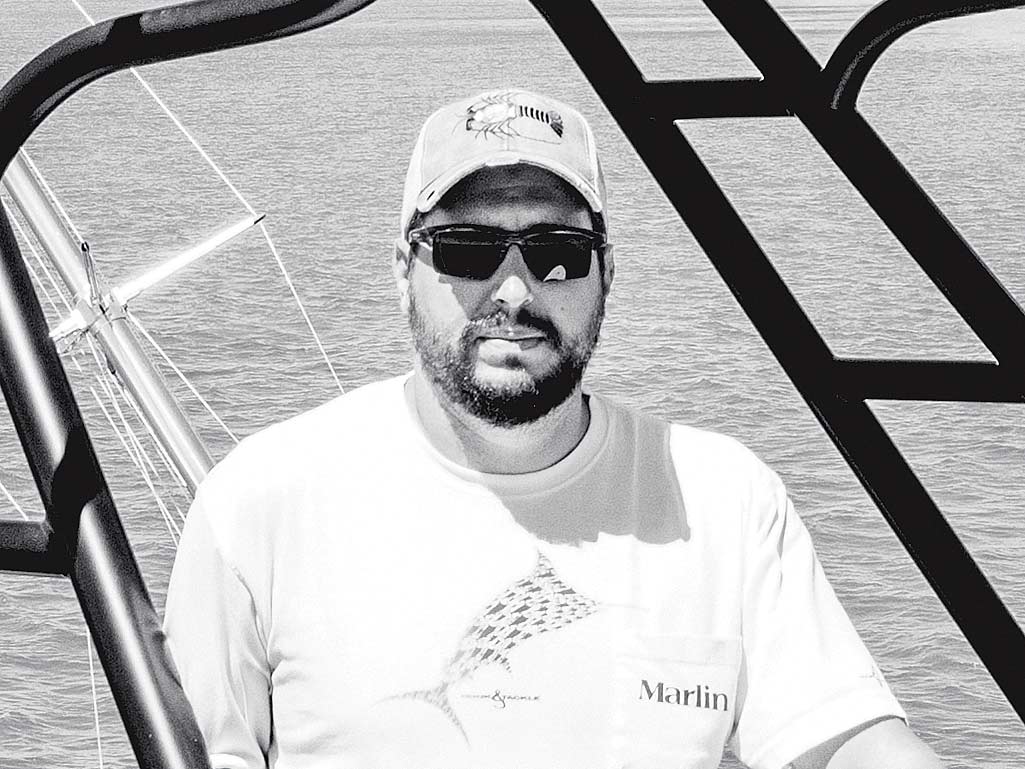
Photographing boats from a helicopter or another running boat is no easy task, but it can be accomplished with the right eye and equipment. “Everyone wants to know what camera you use,” Rabil says, “but the real question is: What lens do you use?” Lenses with a large aperture allow for more light, ensuring proper exposure. “Get something with a nice focal range and a lower maximum aperture to lessen the learning curve, and you’ll be much happier with the results. You wouldn’t pair a 50W to a bait rod, so don’t buy a nice camera body with a cheap lens,” he says.
The Gear
His first published photograph—a headshot taken just after he invested in some good gear—acted as a foot in the door and encouraged him to keep at it. He’s used many different camera bodies over the years but now relies on a Sony a7R III and a suite of Sony G-master lenses, naming the 24-70mm as his workhorse. To make his work even more interesting, a GoPro Hero7 Black mounted it to his camera body records video of running boats while on assignment. His imagery captures the power and craftsmanship behind each build.
Favorite Shot
“It’s always hard to pin down a favorite photo,” Rabil says. “There are images that fit a specific need, or add color to a story, and then there are the shoots that are just plain fun.” When friend Capt. Mick Aixala called Rabil and told him to grab his camera for some shots of his 62-foot Spencer, Brisa, he did just that: photographed the perfect boat, in perfect weather, for a perfect shot. Rabil insists that it’s all worth it when it comes together.
